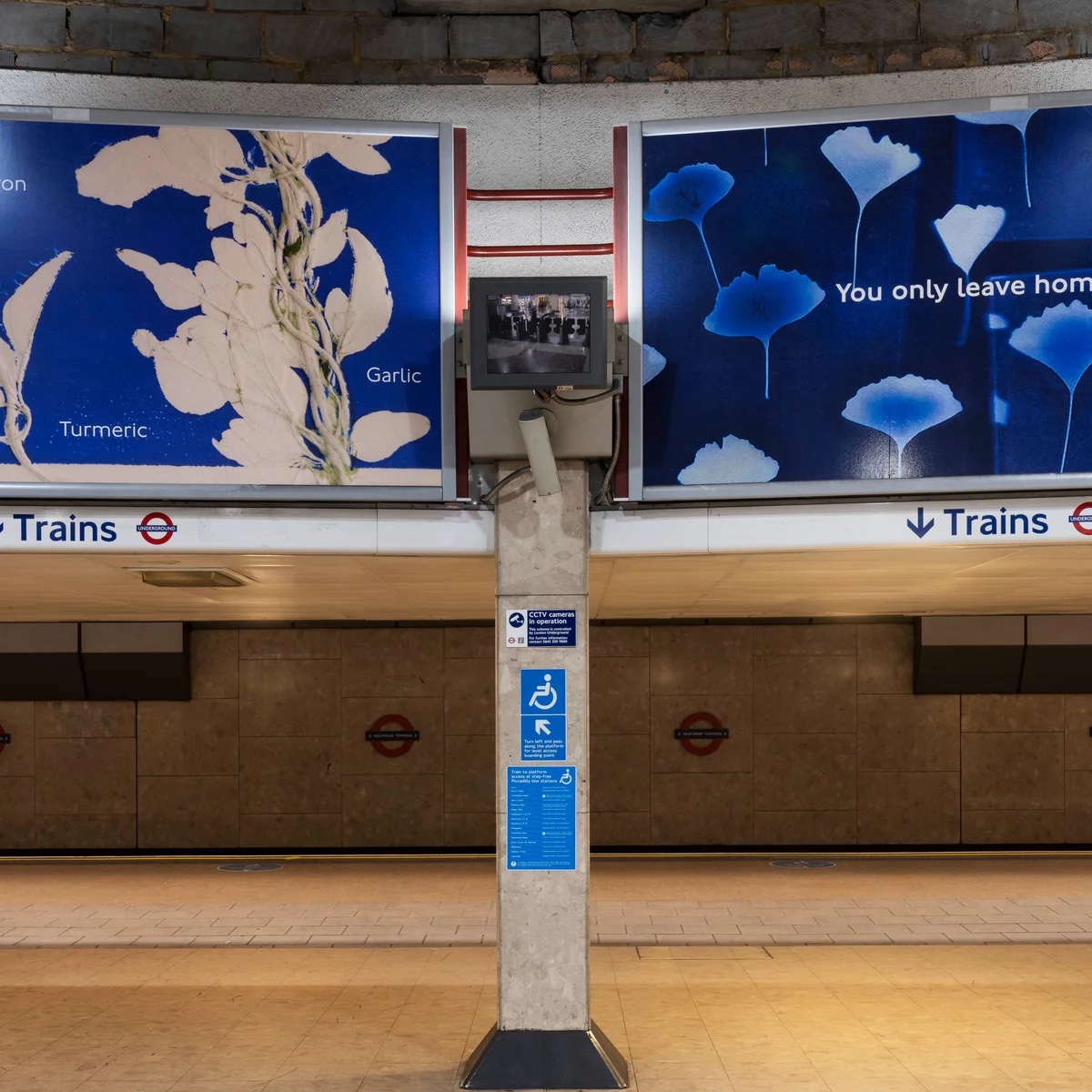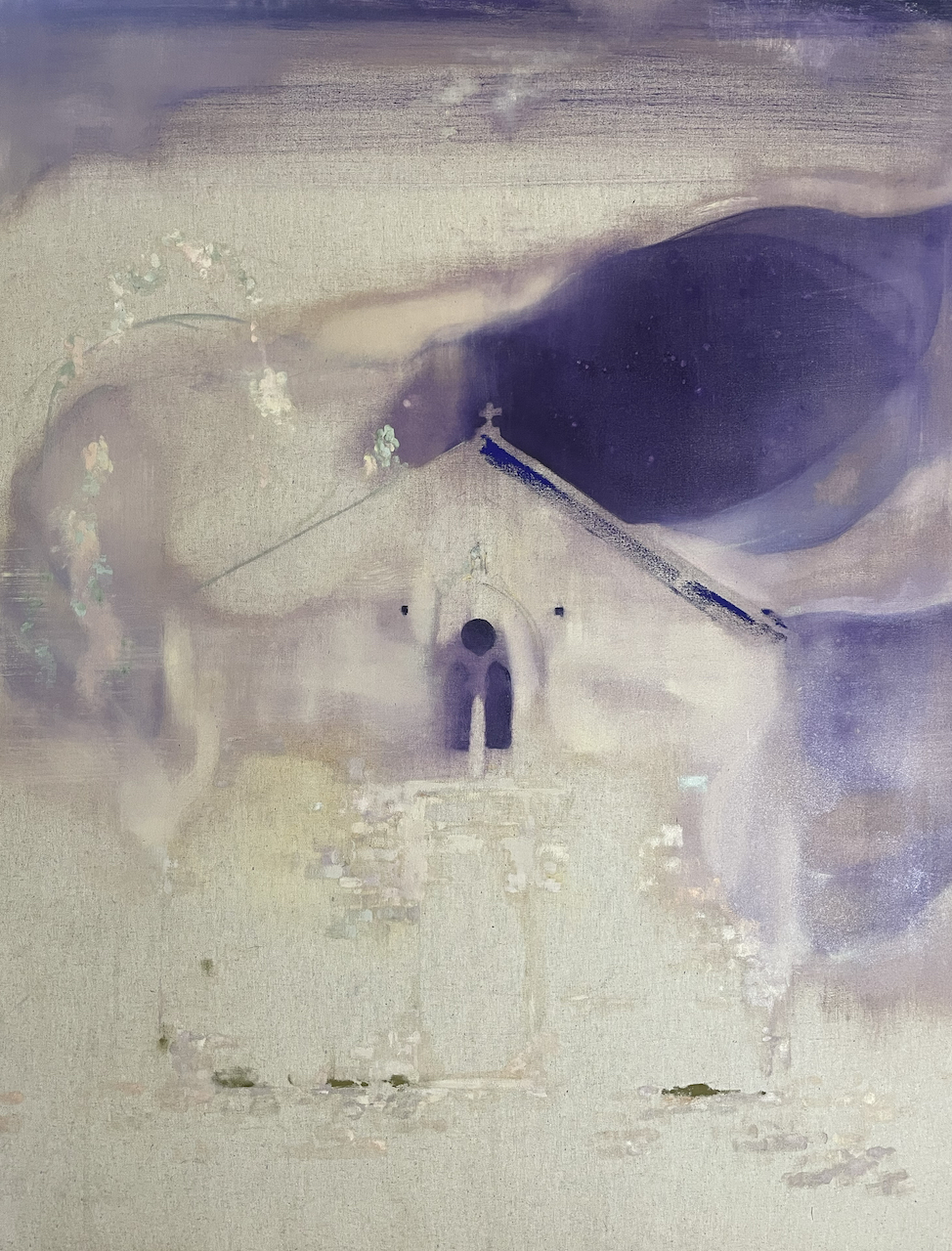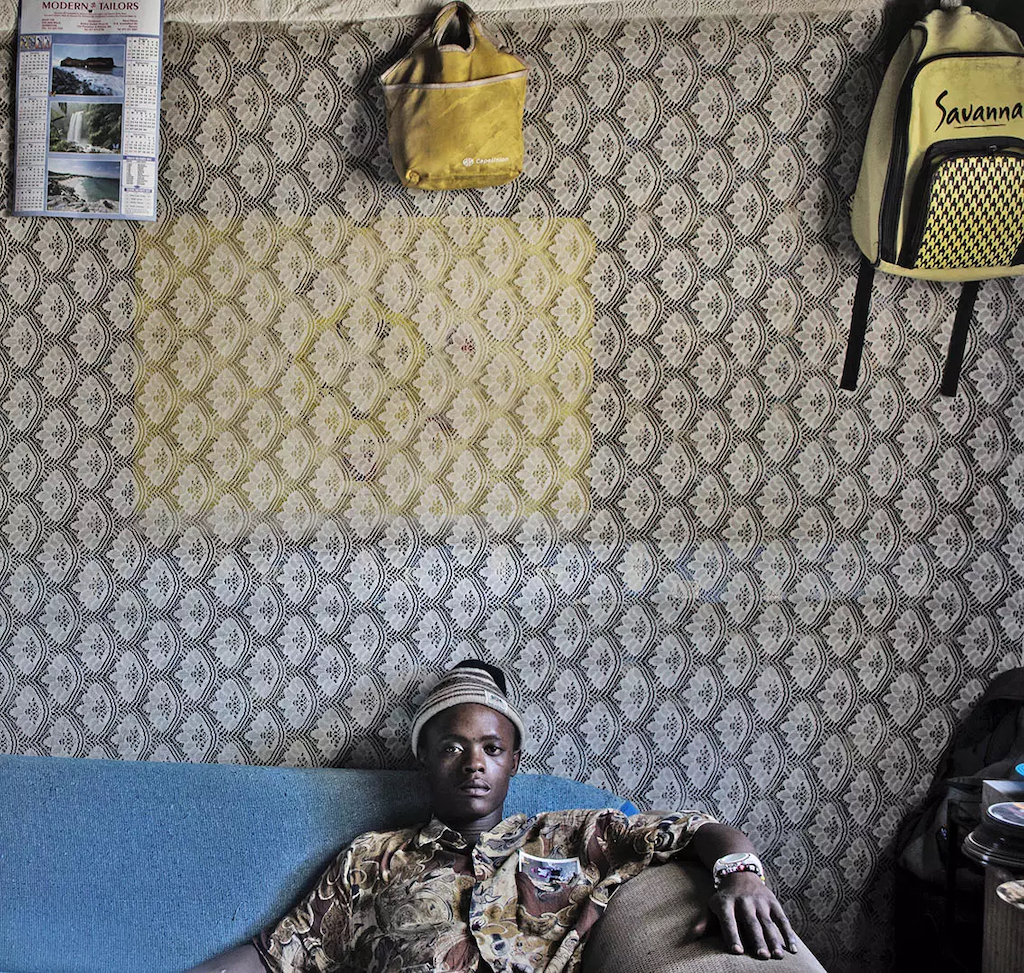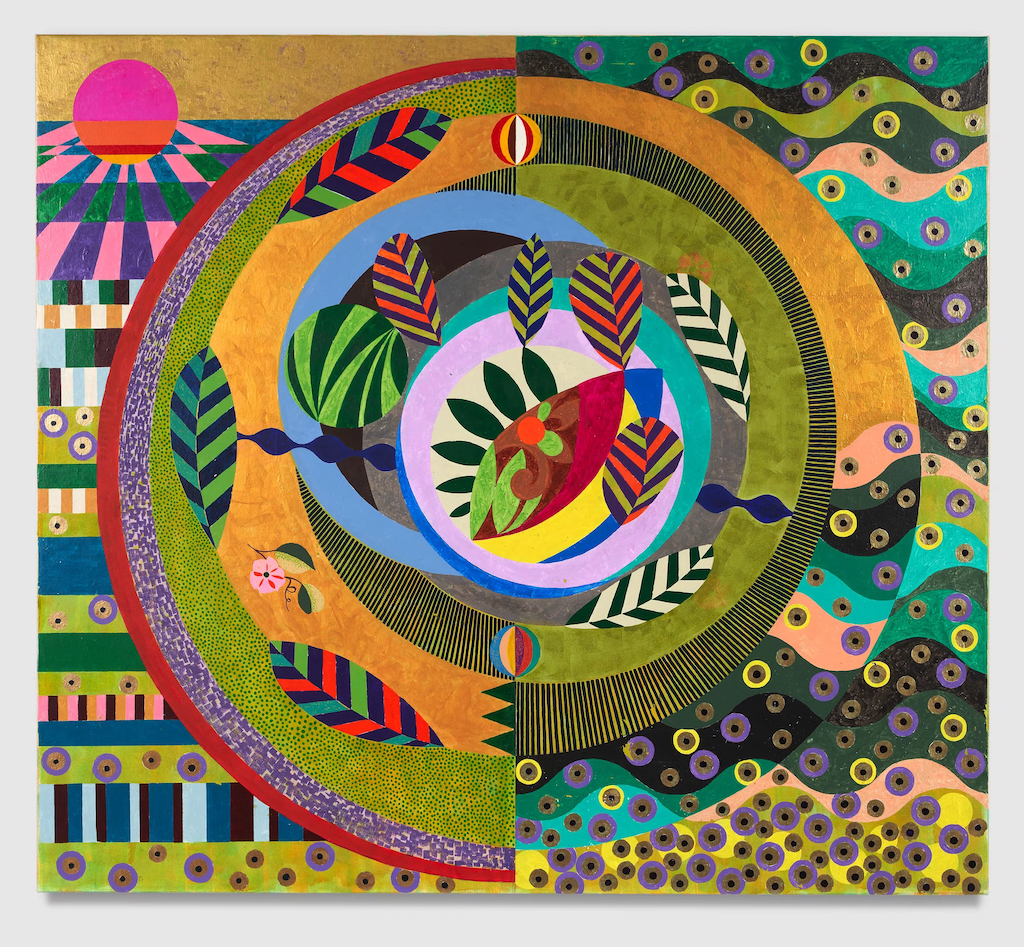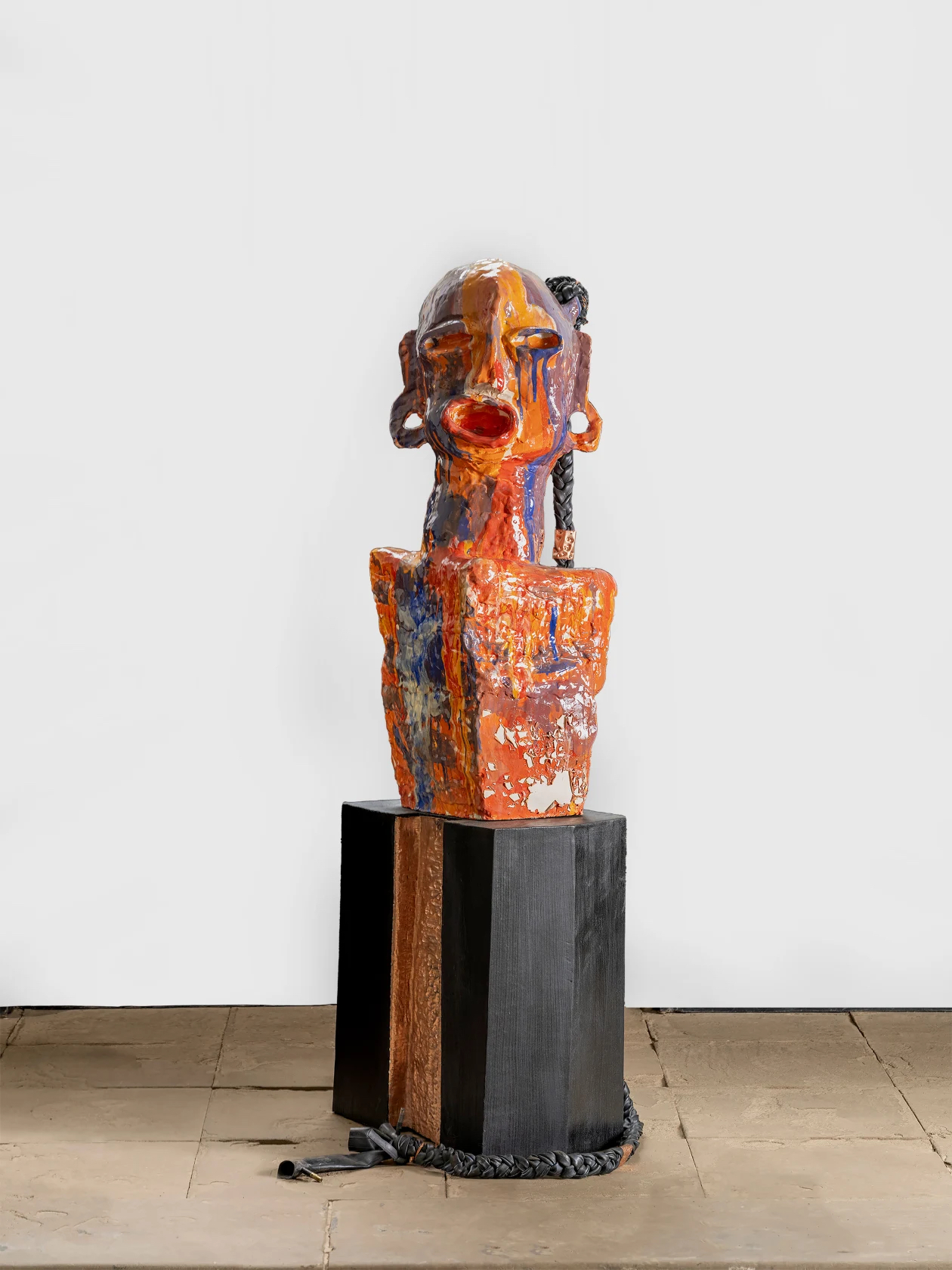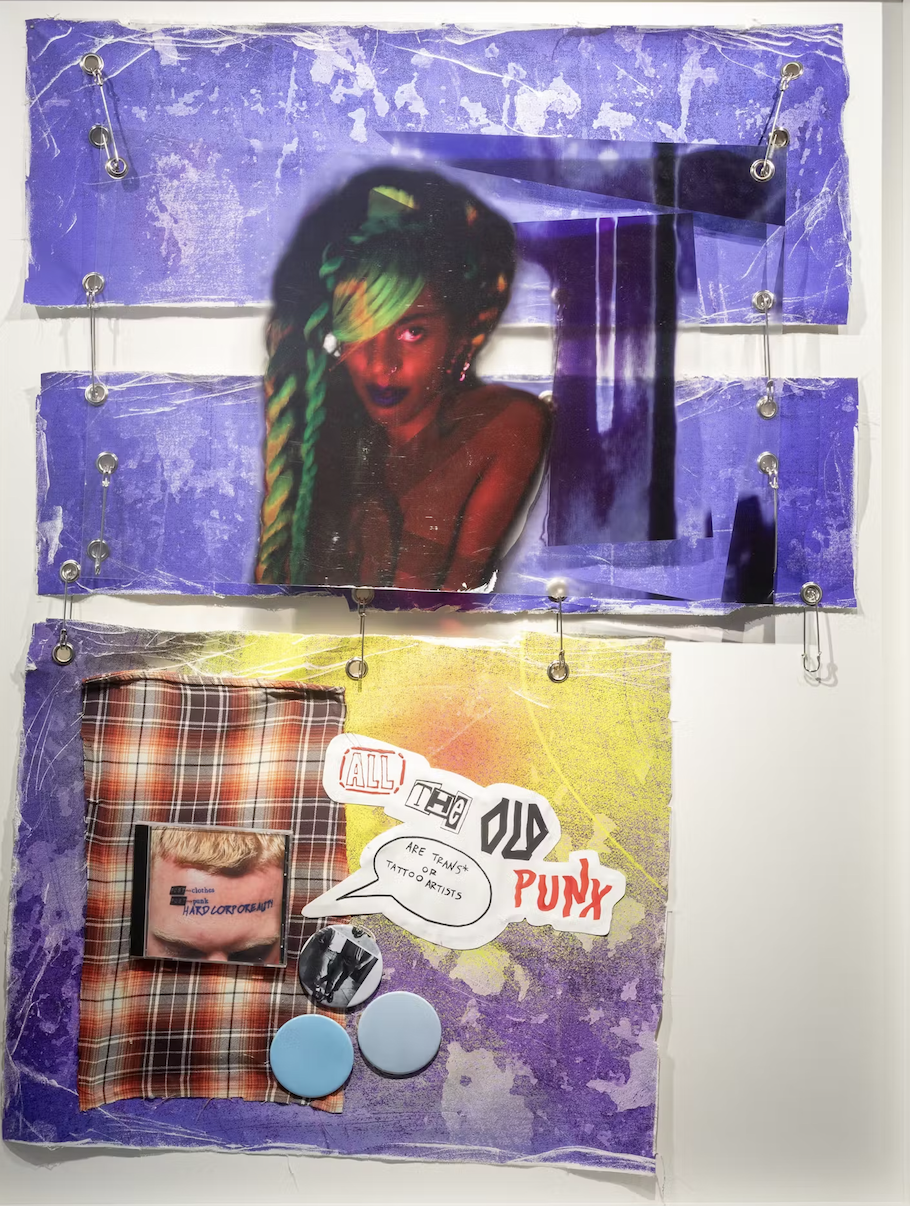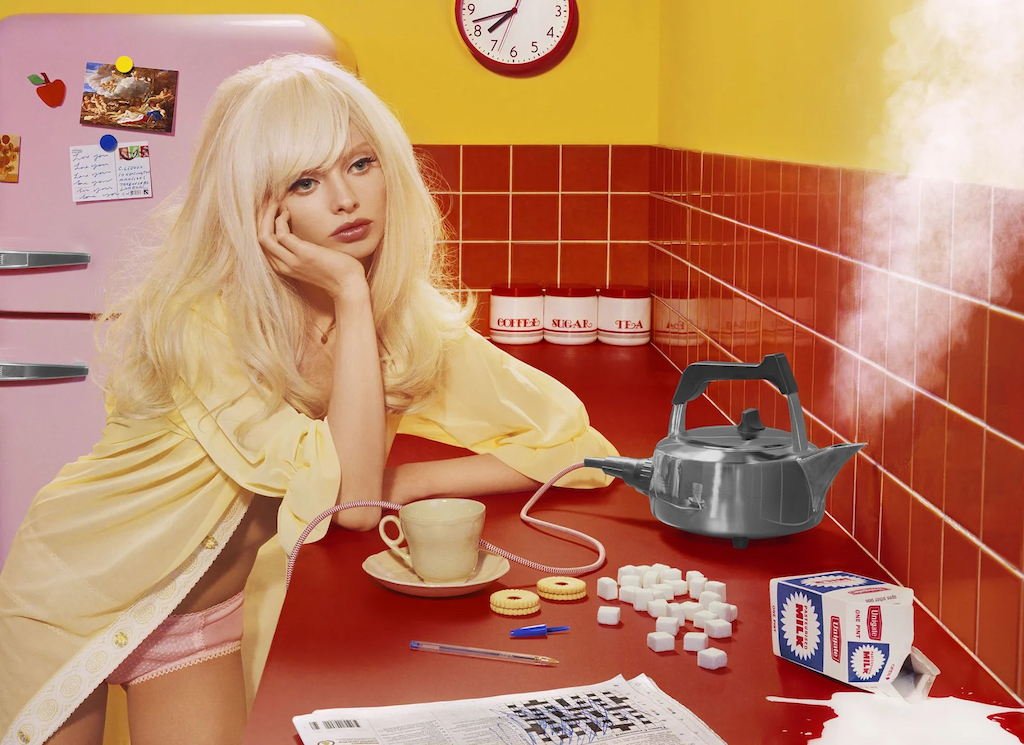
Dream Venus Etcetera (after Titian), Miles Aldridge
Women have been the persistent centre of British fashion photographer Miles Aldridge’s images for more than three decades. The visionary artist has trained his lens on a fantastical cast of women, dazzling in lucid colour. But behind the seemingly perfect surfaces, his subjects – with their ominous blank expressions – suggest something psychologically fraught and complicated.
A trademark of the uncanny atmosphere Aldridge’s images conjure is this image, Venus Etcetera (after Titian). Part of a series of works reworking ideas from Italian Renaissance painters into contemporary compositions, the highly stylised portrait features an elegant female subject, the height of glamour – but something is off. It’s all in the details that subvert the idyllic image of beauty as it unravels before our eyes: the spilled sugar cubes on the table, the crossword scrawled over in blue biro, the distant stare of the subject unaware of the steaming kettle that screeches out steam beside her and the split milk on the polished red countertop. We are plunged into the mysterious world of her unknown.
It’s exactly the sort of image that has made Aldrige, 59, such a prominent figure in the fashion photography world since the 1990s. Today, his photographs belong in the collections of the National Portrait Gallery, the British Museum, the International Center of Photography, the Fondation Carmignac, and the Nicola Erni Collection. He has shot for publications including Vogue, The New Yorker, and the New York Times. Alridge’s work currently features in the Saatchi Gallery’s Beyond Fashion exhibition, on view until 8 September.
A trademark of the uncanny atmosphere Aldridge’s images conjure is this image, Venus Etcetera (after Titian). Part of a series of works reworking ideas from Italian Renaissance painters into contemporary compositions, the highly stylised portrait features an elegant female subject, the height of glamour – but something is off. It’s all in the details that subvert the idyllic image of beauty as it unravels before our eyes: the spilled sugar cubes on the table, the crossword scrawled over in blue biro, the distant stare of the subject unaware of the steaming kettle that screeches out steam beside her and the split milk on the polished red countertop. We are plunged into the mysterious world of her unknown.
It’s exactly the sort of image that has made Aldrige, 59, such a prominent figure in the fashion photography world since the 1990s. Today, his photographs belong in the collections of the National Portrait Gallery, the British Museum, the International Center of Photography, the Fondation Carmignac, and the Nicola Erni Collection. He has shot for publications including Vogue, The New Yorker, and the New York Times. Alridge’s work currently features in the Saatchi Gallery’s Beyond Fashion exhibition, on view until 8 September.
Share





